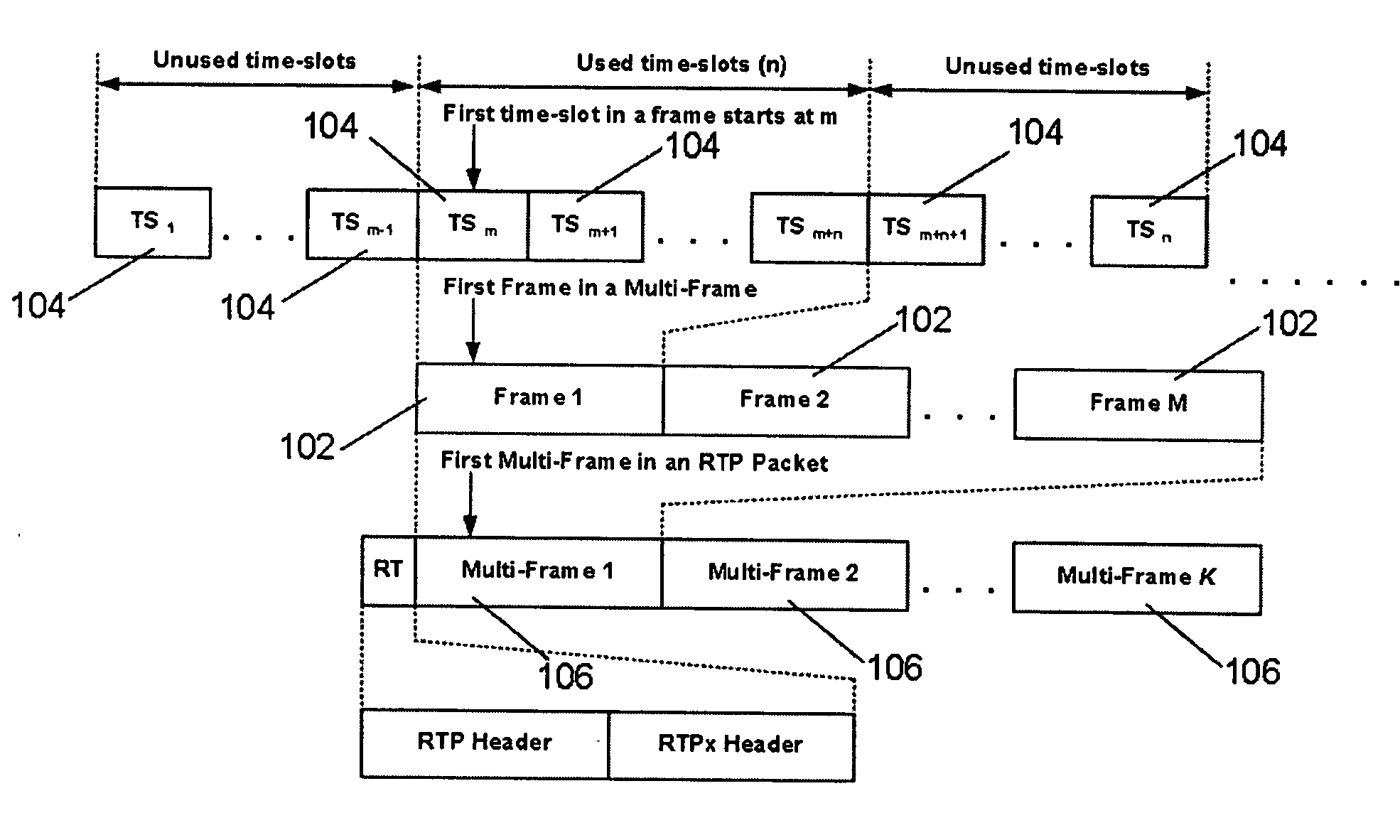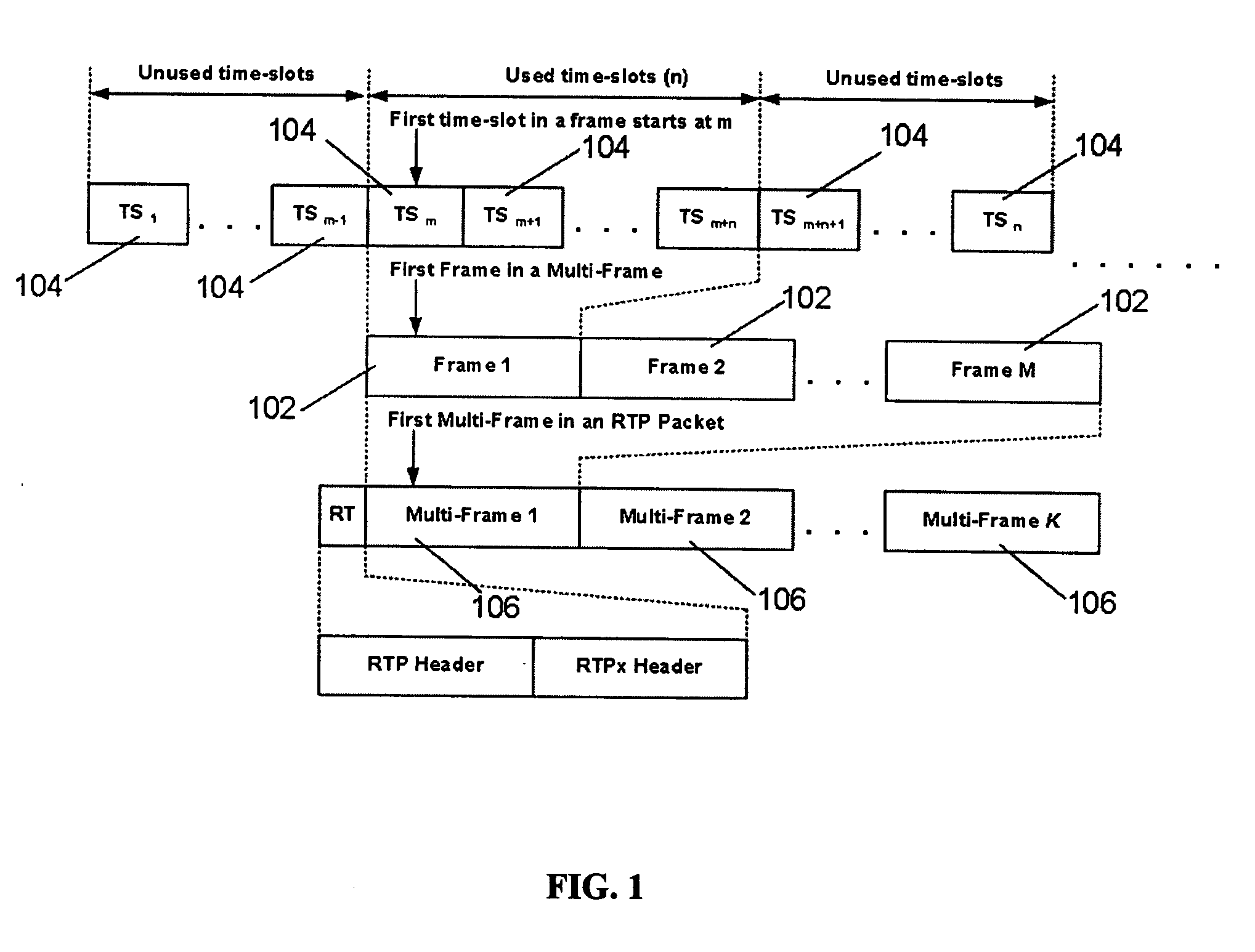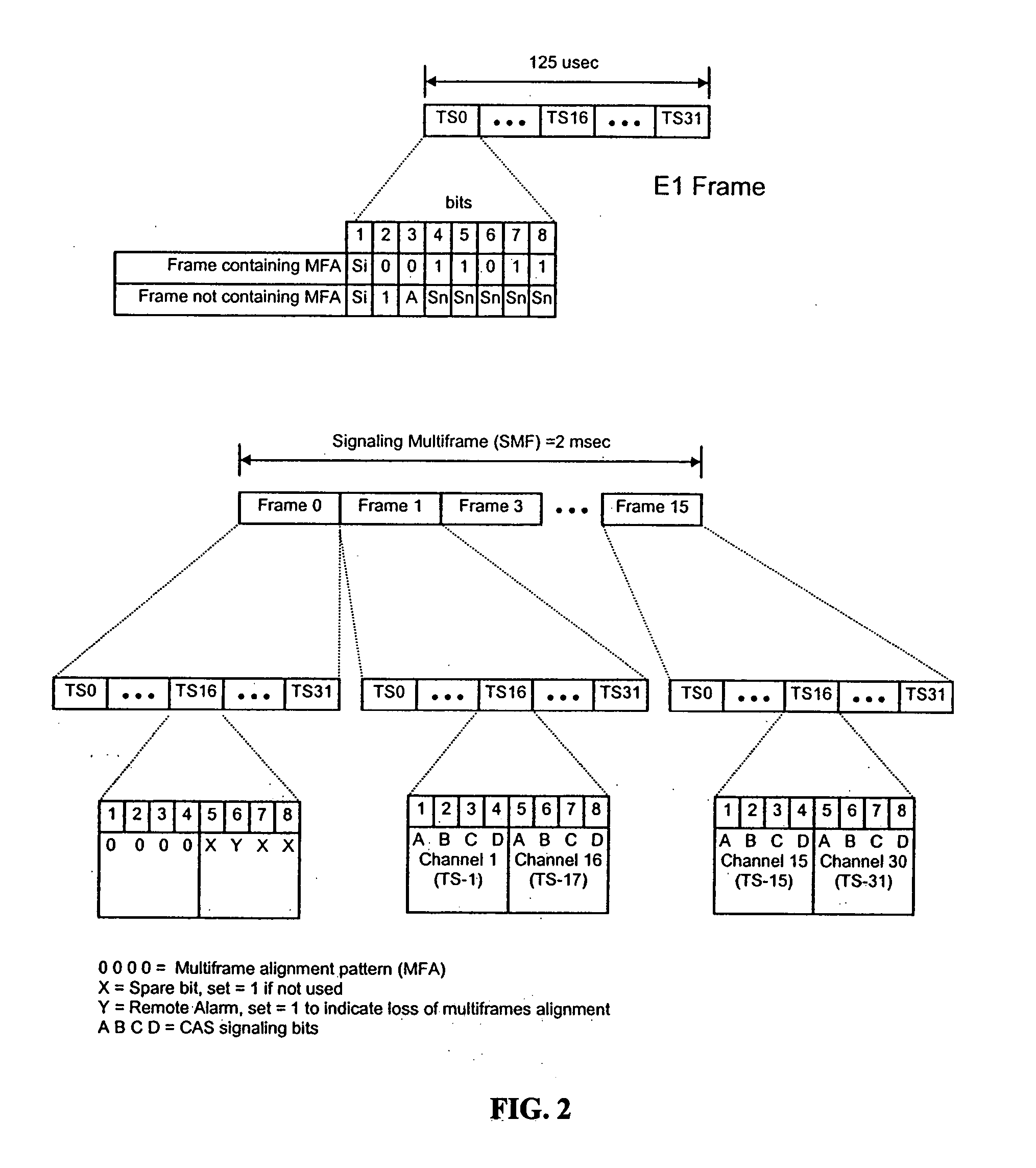Method and system for encapsulating time division multiplex data into individual packets of a packet based network
a packet based network and data technology, applied in the field of digital communications, can solve the problems of reducing the overall bandwidth efficiency, requiring unique convergence layers, and encapsulating t1 or e1 tdm-based data into packet based communications protocols, and achieve the effect of increasing the efficiency of data packets
- Summary
- Abstract
- Description
- Claims
- Application Information
AI Technical Summary
Benefits of technology
Problems solved by technology
Method used
Image
Examples
Embodiment Construction
[0063] A method of encapsulating TDM data into individual data packets (also referred to as “the convergence layer”), as described herein, provides a novel way to transport T1 or E1 data via existing packet based networks. Thus, the method described herein is a set of rules that defines how to organize TDM data into the individual packets of a packet based communications protocol. Other classes of TDM data, such as Fractional T1 / E1 and N×64K, may also be transported using the method described herein. For the purposes of illustration and example only, the description of the method herein concentrates on the transport of T1 or E1 data (referred to as E1 / T1 herein). The underlying concepts taught are also applicable to other data formats. The present method of encapsulating TDM data into individual data packets (i.e., the convergence layer) allows TDM data, for example T1, E1, N×64k, etc., to be encapsulated into Real Time Protocol (referred to herein as “RTP”) packets, as shown in FIG...
PUM
 Login to View More
Login to View More Abstract
Description
Claims
Application Information
 Login to View More
Login to View More - R&D
- Intellectual Property
- Life Sciences
- Materials
- Tech Scout
- Unparalleled Data Quality
- Higher Quality Content
- 60% Fewer Hallucinations
Browse by: Latest US Patents, China's latest patents, Technical Efficacy Thesaurus, Application Domain, Technology Topic, Popular Technical Reports.
© 2025 PatSnap. All rights reserved.Legal|Privacy policy|Modern Slavery Act Transparency Statement|Sitemap|About US| Contact US: help@patsnap.com



